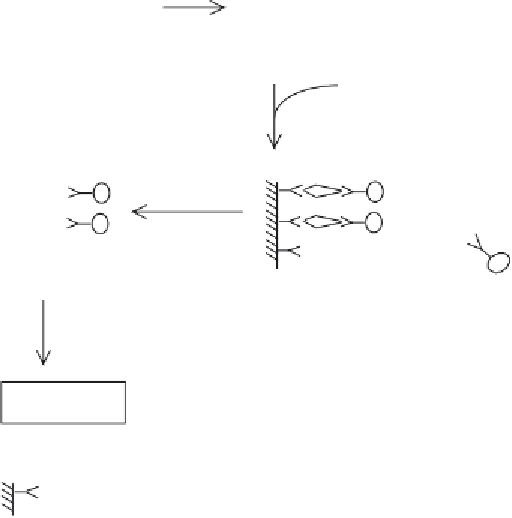Biomedical Engineering Reference
In-Depth Information
+
E
E
E
E
Washing step
E
E
E
E
Enzyme assay
Key:
= Antigen
i.e. the therapeutic
protein
= Immobilized
antibody
= Antibody-enzyme
conjugate
E
Figure 7.B1
Basic principle of the ELISA system
is that of the ELISA. The basic principle upon which the ELISA system is based is illustrated
in Figure 7.B1. In this form it is also often referred to as the double antibody sandwich tech-
nique.
Antibodies raised against the antigen of interest (i.e. the therapeutic protein) are fi rst ad-
sorbed onto the internal walls of microtitre plate wells. The sample to be assayed is then incu-
bated in the wells. Antigen present will bind to the immobilized antibodies. After an appropri-
ate time, which allows antibody-antigen binding to reach equilibrium, the wells are washed.
A preparation containing a second antibody, which also recognizes the antigen, is then
added. The second antibody will also bind to the retained antigen and the enzyme label is
conjugated to this second antibody.
Subsequent to a further washing step, to remove any unbound antibody-enzyme conjugate,
the activity of the enzyme retained is quantifi ed by a straightforward enzyme assay. The activ-
ity recorded is proportional to the quantity of antigen present in the sample assayed. A series of
standard antigen concentrations may be assayed to allow construction of a standard curve. The
standard curve facilitates calculation of antigen quantities present in 'unknown' samples.















Search WWH ::

Custom Search